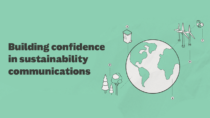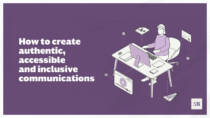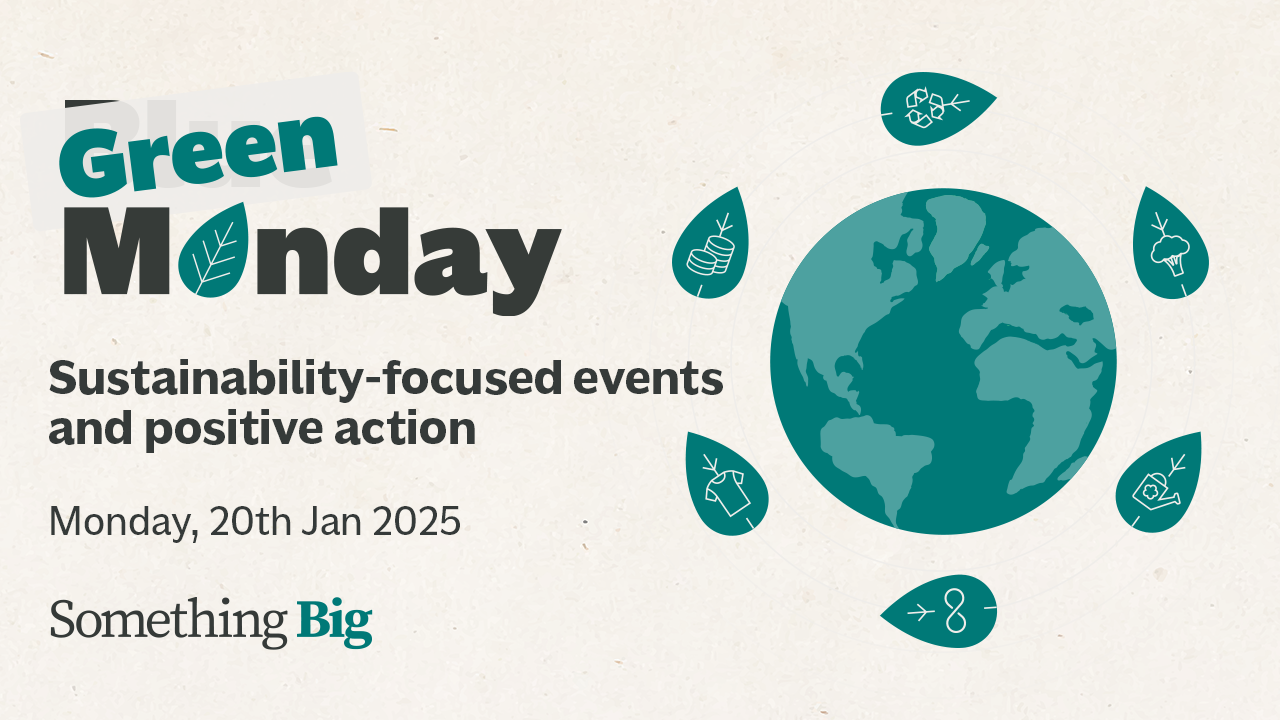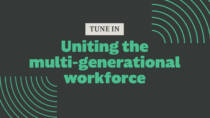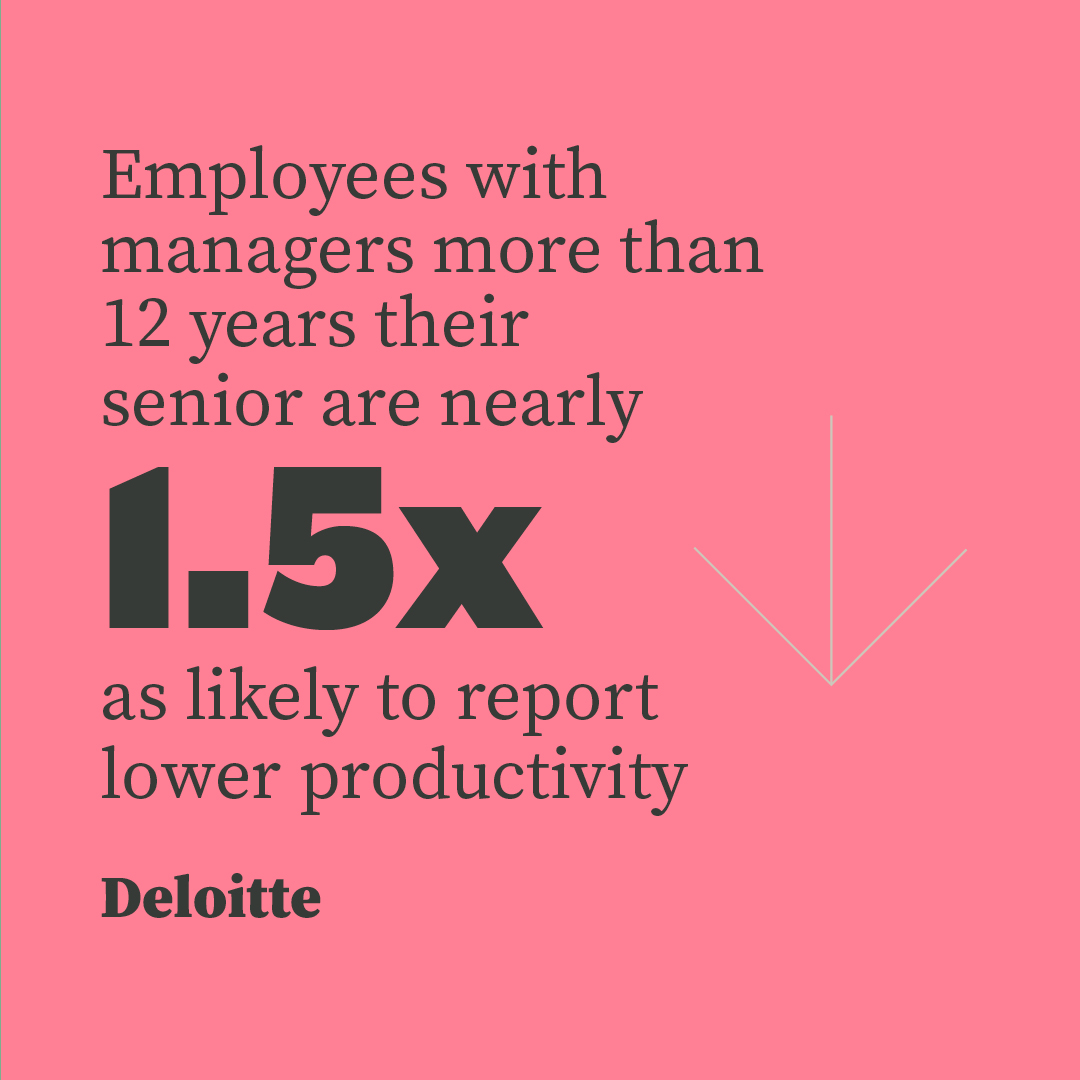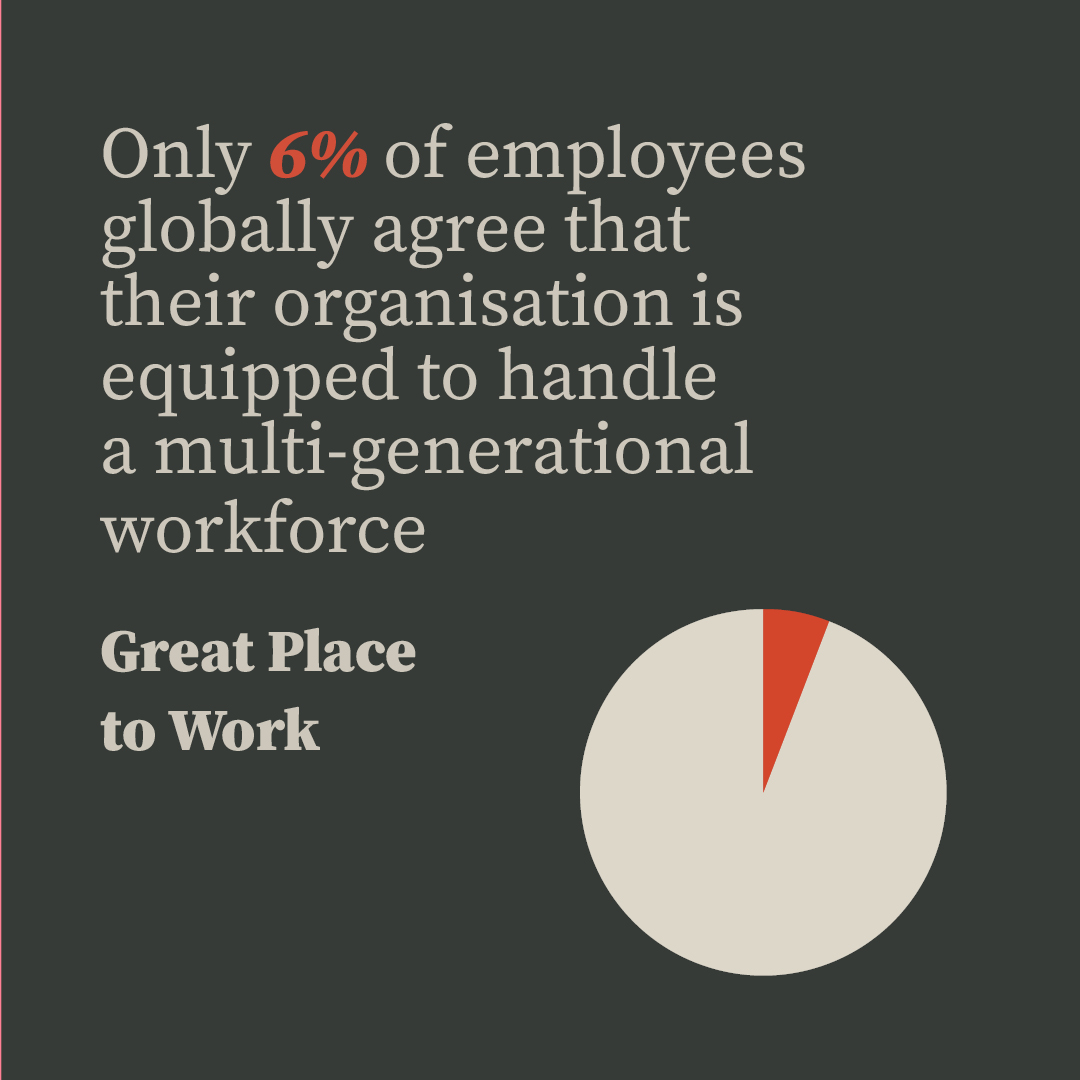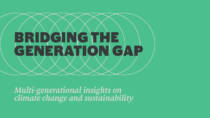Guide: Building confidence in sustainability communications
By Sally Pritchett
CEO
Your shortcut to confident, compelling and trustworthy sustainability comms.
Sustainability comms is one of the hardest things to get right.
Say too little, and people won’t know about all the great work you’re doing. Say too much, and you could risk being accused of greenwashing. The stakes are high, but the opportunity is huge – when you get it right, you build trust, inspire action and create real change.
This guide is here to help you do exactly that.
Whether you’re a communications professional tasked with telling the sustainability story – or a sustainability lead trying to get people to listen – this practical manual is designed to help you communicate with clarity, honesty and impact.
What’s inside:
- Why sustainability comms is uniquely challenging – and how to overcome the common traps
- How to communicate honestly without greenwashing – or greenhushing
- Tips for choosing the right words, tone and visuals
- Insights on how different generations engage with the topic of sustainability
- Real-world examples, do’s and don’ts and easy wins you can start using right away
- Cut through the noise. Say what matters. And say it in a way people trust.
Download the manual and start building confidence in your sustainability comms.
Download here
We’ve created two accessible versions of the manual – light and dark mode – both optimised for screen readers. Choose the one that works best for you. Need help? Just drop us a line at hello@somethingbig.co.uk.
PDF version
A PDF that can be read by a screen reader
Dark mode PDF
A PDF in dark mode, that can be read by a screen reader
Guide: How to create authentic, accessible and inclusive communications
By Sally Pritchett
CEO
Discover how to create communications that connect with audiences through authentic, accessible, and inclusive messaging in this essential guide.
Inclusive, accessible, and authentic communication has the power to connect, inspire, and drive meaningful change. This manual, How to Create Authentic, Accessible, and Inclusive Communications, is an essential resource for anyone striving to create messaging that resonates with diverse audiences and delivers real impact.
Packed with insights, guidance, and actionable tips, this guide will help you ensure your work is inclusive, accessible, and authentically representative. Whether you’re looking to deepen your understanding, refine your communication approach, or start embedding inclusion into your processes, this manual provides the tools and inspiration you need.
In this manual you’ll discover:
- Why inclusivity in communications matters and how it drives connection and impact.
- What inclusive communications should look and feel like with practical examples.
- How to foster diversity and authentic representation while avoiding tokenism.
- Practical tips for accessibility making sure your communications reach everyone.
- Advice on using AI ethically to support inclusivity and authenticity.
- How to build an inclusive mindset and embrace continuous improvement
Download the guide now and start creating communications that inspire change, connect with audiences, and make a lasting difference.
Choose the right version for you
We’ve created several versions of the manual, each with different accessibility features. Please choose the option that works best for you. If you need assistance navigating these options, don’t hesitate to get in touch with us hello@somethingbig.co.uk.
PDF version
A PDF that can be read out by a screen reader
Dark mode PDF
A PDF in dark mode, that can be read out by a screen reader
Audio PDF
A PDF with the option to be read aloud by an AI voiceover
Video audio
A video of the manual, read by an AI voiceover
2025 Workforce Trends Every Communicator Needs to Know
By Sally Pritchett
CEO
What does 2025 have in store for the workplace - and how can effective, inclusive communication help navigate the challenges ahead?
What does 2025 have in store for the workplace - and how can effective, inclusive communication help navigate the challenges ahead?
We’ve reviewed insights from leading organisations, including Great Place to Work, Top Employer, Make Work Better, Gallup, Mercer, and more. We’ve identified the six key trends shaping workplace culture, and how communicators can play a pivotal role in supporting these trends.
1. Changing workforce demographics
As the workforce spans more generations than ever, the growing generational gap could lead to intergenerational tensions.
How communicators can help:
Earlier in the year we explored the communications challenges that can cause friction between different generations. Check out our practical guides on unravelling ageism, improving collaboration between generations, shifts in language, channels and communications format and hear from experts on how the multigenerational workforce can be united.
2. Creating Neuroinclusive workplaces
With greater awareness of neurodiversity, organisations are recognising the value of different ways of thinking. To unlock this potential, workplaces need to become more neuroinclusive.
How communicators can help:
Explore how to create neuroinclusive work environments or sign up to this event on the 10 January with Autism Unlimited, to learn practical steps and strategies to foster a neuroinclusive workplace culture.
3. Adapting to evolving technology
While technology promises greater efficiency, it also risks overwhelming employees if not managed carefully. Adding new communication channels without retiring outdated ones can lead to digital overload.
How communicators can help:
Discover how to identify and address communication overload in your organisation. Read this article for practical fixes and insights into improving digital body language for more meaningful, productive interactions.
4. Focusing on sustainability and ESG
The climate crisis demands urgent action, and organisations need to actively engage employees in their sustainability and ESG efforts. There’s no room for “climate fatigue.”
How communicators can help:
In this research, we discovered how different generations talk about climate and sustainability so that we engage employees and create a culture of sustainability.
To carry on the conversation in 2025, join our Green Monday sessions to hear from sustainability and comms leaders on how they are engaging their communities.
5. Strengthening belonging and inclusion
Everyone deserves to feel safe, included, and free to be themselves at work. Accessibility plays a vital role in creating an inclusive environment where everyone can fully engage and contribute.
While progress in DEIB (Diversity, Equity, Inclusion, and Belonging) has accelerated, there’s still much work to do – especially as rising workplace loneliness highlights the gaps in creating truly connected and supportive cultures. Accessible communication can help to ensure no one is left out, fostering a sense of belonging that goes beyond physical and digital barriers.
How communicators can help:
For communications to be impactful and inclusive, they must also be accessible. Give everyone the same access to your comms with our practical advice on levelling up accessibility in your communications
6. Prioritising health & Wellbeing
Declining employee wellbeing continues to raise alarm bells – from burnout and mental health challenges to rising cancer rates and reduced physical activity.
How communicators can help:
Take the first step in building a culture of wellbeing. Read our guide for practical strategies, or explore how to support employees living with cancer.
As we approach 2025, fostering a workplace culture that is healthy, safe, and inclusive has never been more critical. If you’re looking for expert support to develop internal communications strategies that engage and empower your workforce, we’re here to help.
30 practical strategies for creating effective and inclusive internal communications
By Sally Pritchett
CEO
Discover practical strategies to enhance your internal communications, making them more effective, inclusive, and engaging in a world flooded with communication.
Discover practical strategies to enhance your internal communications, making them more effective, inclusive, and engaging in a world flooded with communication.
In a noisy world filled with countless channels and constant ads, internal communication can feel overwhelming for many. Being an excellent, effective and inclusive internal communicator requires a lot of skill and expertise.
In this article, we’ll explore the key areas that make organisational communications more effective and inclusive.
5 strategies to reduce the volume of communication
There’s no doubt that in all organisations communication has become overwhelming and the larger the organisation the more overwhelming this can feel.
‘Constantly talking isn’t necessarily communicating’ Charlie Kaufman
While instant chat channels like Teams and Slack have helped speed up collaboration they’ve also added to the noise and duplication. Already struggling to keep up with the hundreds of daily emails, instant chat messages now mean we’re expecting employees to hold several conversations concurrently. And rather than speed up productivity this multi-tasking is slowing organisations down and impacting employee wellbeing as they fight to prioritise and keep on top of their workloads.
- Pledge to reduce duplication, making communication engaging and effective the first time prevents having to send it multiple times.
- Proactively segment audiences so you can personalise and increase relevancy.
- Increase self-serve information, letting audiences consume information when they’re ready.
- Give your channels a clear purpose, audience and content strategy so the right information is going through the right channels.
- Ditch the routine, if a newsletter is going out weekly because it always has and the deadline is driving the content, it’s time to ditch the deadline and publish on demand instead.
5 strategies to increase the clarity in your communication
There’s an irony to Blaise Pascal’s quote ‘If I had more time, I would have written a shorter letter’ because, of course, we would have more time if we were consuming less communication. In organisational comms, one of the best things we can do is respect our workforce’s limited time.
- Work hard on your subject lines / headings, these are your headlines so think like a journalist.
- Use AI tools to keep your comms concise. AI can be great for getting started, but they can also be quite verbose. write prompts carefully and consider giving a challenging word count.
- Structure your comms thoughtfully: start by setting the topic, add depth in the middle, and end with a clear call to action.
- Reduce company jargon; it complicates communication, especially for newcomers or those in a hurry. Avoid acronyms when possible.
- Set word count limits. If you regularly publish newsletters or intranet articles, be clear on your limits and challenge yourself to stay within them.
5 strategies to increase accessibility in communications
The most creative communications in the world won’t be effective if they don’t enable people with different abilities to access them. All workforces will have employees with differences in visual, hearing, learning and cognitive processing as well as those with limited literacy proficiency.
In the UK, accessibility regulations have been in force for the public sector since 2018 ensuring comms tools like websites, mobile apps and intranets all follow accessibility guidelines. There are no regulations for organisational comms, but that doesn’t need to be a barrier for driving accessibility in your communications.
- Focus on readability, with the average reading age in the UK being 9 years old. Consider using tools like Hemmingway Editor to help simplify your communications.
- Format your text based on its intended use. As most content is consumed digitally, consider how it will be viewed and adjust accordingly. For example, if it’s likely to be read on a desktop screen, use a landscape layout instead of portrait..
- Ensure compatibility with screen readers, this means formatting your documents with consideration.
- Check your colour contrasts as employees with colour blindness may struggle with certain colours or contrasts.
- Get your typography right because font choices and sizes are crucial for making communications effective and accessible.
For a deeper read on accessible comms check out our recent blog or watch our webinar.
5 strategies to use imagery inclusively
The human brain typically processes images significantly faster than written text, making imagery a potential fast track to creating effective communication – when used correctly. Often, however, imagery is also used to break up text, fit existing templates or to make communication ‘look better’. This is where the challenge comes, forcing audiences to process images that add nothing to the overall purpose of the communication.
- Make sure images add to the content, try to avoid bland library shots that add no value.
- Try to avoid overly surreal images unless this is part of your brand identity.
- Authentic representation is vital. If you’re using library images, try adding prompts like ‘diverse’ or specific attributes to result in a wider selection.
- Aim for a balanced representation of people over time to avoid bias towards certain parts of your workforce or reinforcing stereotypes.
- Consider using animation or illustration to provide more options if authentic or appropriate photography isn’t available.
5 strategies to making your communications more audience centric
While it may seem obvious, it’s easy to focus on your own priorities and accidentally overlook how your audience will perceive your communications.
- Consider different job roles and aim to make communications resonate with the frontline. Before sending or approving, put yourself in your audience’s shoes to make improvements.
- Workplaces are diverse with cultural nuances, avoid idioms or complex expressions that could hinder inclusion.
- There are up to five generations in the workforce for the first time, stop and think how communications could be perceived by different ages of your workforce.
- Using audience insights is critical for your messaging to resonate. If the organisation is struggling due to challenging times, staff shortages, or seasonal peaks, ignoring this in your communications can alienate your audience. Instead, acknowledge the organisation’s current situation and ensure your communications are appropriately positioned.
- Stay attuned to how your audience responds, including their preferred channels, formats, and language, to maintain effective communication.
Tiny wording tweaks like replacing ‘lunch breaks’ with ‘rest breaks’ can make more difference than you think if your front line includes out of hours or night shift workers.
For a deeper exploration on embracing multi-generational workforces, check out our webinar.
5 strategies for building trust in your communications
Effective communication is not about saying what you want to say correctly but enabling it to be heard correctly. To inspire action from your audiences, trust and believability play a huge part.
‘The idea is to write so that people hear it and it slides through the brain and goes straight to the heart’ Maya Angelou
- Consistency is key to building trust. Whether guiding the workforce through a complex transformation or engaging them in a new strategy, keep a consistent dialogue on rationale and goals.
- Tone of voice should be authentic, open, honest and human to be believable.
- Avoid vague phrases, if there’s important information, share the facts openly.
- Don’t ignore difficult topics: if there’s a question on the workforce’s mind, address it directly. Avoiding it won’t make it go away; it just reduces trust.
- Provide feedback loops and create psychologically safe opportunities for audiences to share concerns, questions, or feedback.
Top tip: To ensure you comms are human, read them out loud, if you sound like a robot you probably need to create a warmer, more conversational tone.’
How would your audiences answer?
Employees go through a mental checklist when receiving communications. Their response – whether, how quickly, and how they engage – depends on how they answer these questions:
- Is this aimed at me?
- Is this relevant to me?
- Do I trust this?
- How do I feel about who this is from?
- Do I care about this enough to prioritise it?
- Do I understand what this is about, or does it require me to stop and think?
- Is it clear what action is expected of me?
- Is there a clear deadline for responding or actioning?
Bringing the value of creativity
As passionate communicators with experience in supporting large organizations and hard-to-reach frontline audiences, we use creativity to simplify messaging, bring stories to life, and inspire action.
Want to find out more? Book a call with us here.
Tune In: Uniting the multi-generational workforce
By Sally Pritchett
CEO
We tuned in to the voices of the multi-generational workforce, uncovering strategies to improve relationships, enhance communication, and boost productivity.
The global population is ageing, resulting in the workforce becoming increasingly multi-generational, with up to five generations working side by side. And this shift is not without its challenges.
At Something Big, we strive to make workplaces fairer, healthier and happier for everyone. But with only 6% of employees agreeing that their leaders are equipped to lead a multi-generational workforce effectively, it’s time for businesses to ensure generational differences are positively impacting relationships, communication and productivity.
To create inclusive workplaces where employees feel safe to be themselves, do their best work, and thrive, we need to listen and learn from different communities, and so we provided a platform for these voices to be heard.
We were delighted to welcome Sophie O’Brien, Founder of Pollen and Tim Whitaker, Trustee and Director of Wise Age for a conversation on uniting the multi-generational workforce. Pollen is a platform dedicated to connecting junior talent with meaningful job opportunities and giving them the resources and guidance they need to succeed, while Tim is a consultant and writer on age and employment issues with various organisations.
Together we tuned in to the voices of the multi-generational workforce, uncovering strategies to improve relationships, enhance communication, and boost productivity.
Tackling harmful generational stereotypes
The workforce is ageing, with projections indicating that by 2050, one in four people in the UK will be over 65. At the same time, Gen Z is now entering the workforce in increasing numbers and is expected to make up 30% of the working population by 2030. During the conversation we discussed how individuals and organisations often make age-based assumptions, relying on stereotypes that can often be harmful, with age discrimination particularly affecting younger workers who are starting their careers and people aged 50 and over.
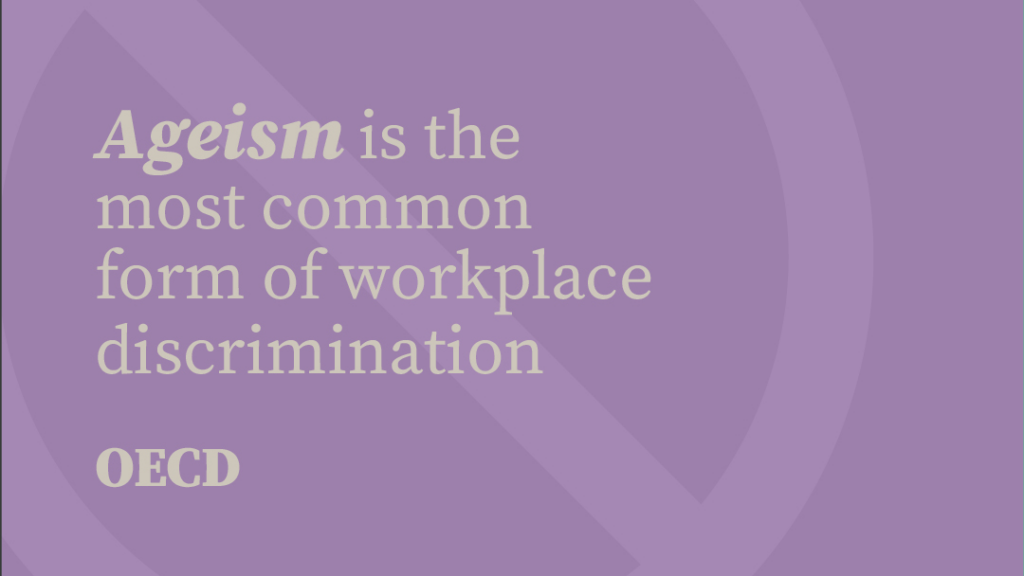
Organisations need to avoid blanket expectations for any generation. We discussed how all generations seek meaningful purposeful work and are now looking for greater flexibility, whether for a better lifestyle or caregiving responsibilities. Leaders and managers need to have human conversations on an individual level to discover what is motivating and hindering employees regardless of their age, and to address these needs.
Supporting Gen Z in the workplace
Sophie shared her experiences supporting Gen Z, who are now entering the workforce and looking to be heard. Gen Zers are often feeling frustrated from being stereotyped as lazy, entitled, and with short attention spans. Instead, Sophie’s experience has found a generation of researchers and multitaskers, who value productivity, are seeking better communication from their employers, and want the opportunity to contribute their ideas.
Organisations need to communicate clearly about where and how Gen Z employees can add value. We need to get better at listening to their ideas and providing opportunities for them to voice their opinions. We know that increased hybrid and remote working may be limiting the access of Gen Z to development opportunities, so mentorship and clear communication guidelines are essential.
Supporting older generations in the workplace
With around one in three UK workers aged 50+, older workers are the fastest-growing employment group. Organisations must learn to better recruit and retain older workers, who often face misconceptions about their flexibility, digital skills, and career trajectory. Ageism is all too often impacting older workers’ access to training and advancement, while bias and age discrimination is being internalised, leading to a lack of self-confidence.
Older workers want to be valued for their experience and knowledge and to be part of the inter-generational exchange. They are seeking flexibility, perhaps to manage health issues or caregiving responsibilities, but also for a better work/life balance. By addressing these needs and creating an inclusive culture that supports older workers, businesses can benefit from their valuable expertise and contributions.
Promoting better inter-generational communication
Effective communication is vital for building relationships, enhancing productivity, and creating successful companies. Whereas poor communication kills culture, erodes trust, and harms businesses. There is a generational communication challenge, as the etiquette of professional communications has evolved. It’s now essential to navigate the variety of different communication channels available without leaving anyone behind.
During the meeting, we discussed the following strategies to improve multi-generational communications:
Establishing clear communication guidelines
Organisations should establish clear communication norms and expectations to ensure everyone is on the same page. This would include guidance on:
- When an audit trail is required for formal communications
- When informal channels like instant messaging are appropriate
- Expected response times across different communication modes
While overarching guidelines are important, teams should also have the flexibility to determine the specific tools and styles that work best for their needs and dynamics.
Promoting cross-generational learning
Skill-sharing across generations could be highly beneficial for fostering effective communication. For example:
- Older workers can share their expertise on meeting etiquette, professional writing, and interpersonal communication skills.
- Younger employees can introduce and train their colleagues on newer communication tools, platforms, and best practices.
This sharing of knowledge not only improves communication but also promotes collaboration and understanding between different age groups.
Adapting communication styles
It’s important to recognize that communication formalities and response time expectations may differ across generations, potentially leading to misunderstandings.
- Communicators should adapt communication styles to the recipient’s preferences, rather than expecting everyone to conform to a one-size-fits-all approach.
- It will likely be a process of trial and error to find the right communication culture that works for each team and the business as a whole.
Effective communication is an art that requires intentionality and adaptability, especially in a multi-generational workforce. Businesses must take on the challenge of tailoring their communication approaches to meet the diverse needs and preferences of their employees.
Fostering multi-generational collaboration and enhancing productivity
We can’t sleepwalk into a cohesive multi-generation workforce, and it will require efforts beyond HR and DEI teams, with senior leaders across the business needed to make a meaningful change.
To enhance collaboration and boost productivity across generations, several strategies were discussed:
Engaging in meaningful conversations
Businesses need to go beyond surface-level staff satisfaction surveys and engage in deeper conversations with employees from different generations. Leaders need to actively listen to understand the issues and unique needs of each age group.
Managers should consider conducting structured career discussions to gain insights into individual goals, aspirations, and challenges. This open dialogue can help tailor support and development opportunities to better meet the diverse needs of a multi-generational workforce.
Flattening hierarchies and empowering all voices
One recurring topic was the challenge posed by traditional hierarchical structures. Companies that foster a more collaborative and inclusive culture often have flatter organisational structures, enabling better multi-generational collaboration.
In such businesses, there are opportunities for all employees, regardless of age or experience level, to contribute their ideas and perspectives meaningfully. Processes should be in place to ensure that every voice is heard and valued, promoting a sense of belonging and engagement across generations.
Redefining career paths
Traditional career paths often follow a hierarchical progression, which may not align with the evolving needs and aspirations of a multi-generational workforce. Businesses should explore ways to create alternative career paths that allow for more flexibility. For example, experienced workers nearing the end of their careers could transition into roles that leverage their expertise and knowledge, while stepping away from full-time, high-pressure roles. This approach not only retains valuable institutional knowledge but also empowers these employees to continue making meaningful contributions.
By nurturing a culture that values all generations’ perspectives and focuses on common goals like meaningful work and business success, organisations can foster collaboration among their multi-generational workforce. This, in turn, can boost productivity and drive innovation.
Uniting the multi-generational workforce
Bridging the generational divide requires a multi-faceted approach – dismantling harmful stereotypes, supporting the unique needs of different age groups, fostering open and inclusive communication, and actively promoting collaboration across generations.
While sensationalised generational rhetoric may attract attention and clicks, it is unhelpful and encourages an exaggeration of differences between generations. Instead, we need to focus on what unites the workforce – the shared desire for meaningful work, growth opportunities, work-life balance, and a sense of purpose.
We’re passionate about making workplaces fairer, healthier and happier for all through better communications. If you’re ready to make an impact on your workplace culture, get in touch to see how we can help you create a more collaborative, productive, and successful multi-generational workforce.
Watch the video: Uniting the multi-generational workforce
Bridging the generation gap: insights on climate change and sustainability
By Sally Pritchett
CEO
Climate change is arguably the defining issue of our time. But how do people from different generations perceive this threat?
One of the key challenges we hear about from our community of communicators is how to effectively talk about sustainability. Many are concerned about falling into corporate washing or greenwashing traps, while others are unsure how to make their communications resonate with their audiences without resorting to doom-and-gloom narratives that risk spiralling into negativity and anxiety.
As workplaces become increasingly multi-generational, a new challenge also arises. Those who have grown up with a constant awareness of the need for societal change to tackle the climate threat are now working alongside those who only discovered the impact of poor natural resource management and the resulting climate crisis in their later years. It’s reasonable to expect that these different generations have very different perspectives on sustainability issues, and therefore, our communication strategies may need to be tailored accordingly.
Commonly held stereotypes suggest that Gen Z and Millennials are highly concerned about the environment and willing to make sacrifices for sustainability. In contrast, Gen X is perceived as less engaged with the issue and cynical about the capability for large-scale change. Meanwhile, Baby Boomers and Traditionalists are often stereotyped as not taking climate change seriously, or perhaps not even believing the science, prioritising economic growth over environmental concerns. If these stereotypes were true, how could we bring these different perspectives together and align a multi-generational workforce on a single company-wide mission towards a more sustainable future?
However, we know that stereotypes are often inaccurate, so to test these ideas we surveyed and interviewed individuals across the generations. Our research explores generational perspectives on sustainability and climate change. Understanding these nuances can help us as communicators to bridge the gap and inspire collective action.
So, how do different generations truly view sustainability, the climate crisis, and their influence around it? Let’s find out…
Generational perspectives on climate change and sustainability
Traditionalists
“I would say I am anxious for my children, grandchildren and great-grandchild.”
- Born before 1945, Traditionalists are aged 79 and older.
- They make up approximately 5-10% of the current workforce.
- On average, Traditionalists report becoming aware of the importance of the environment and the reality of climate change in their 50s.
- On a scale of 1-10, they rate their anxiety level around climate change as 7. This is the lowest rating, tied with Gen X and Gen Z.
- They believe the main causes of climate change are industry and transport emissions.
- Their top action to reduce climate change in the next decade is lowering emissions from transport, such as adopting electric vehicles.
- They felt that their generation could have recycled more and better-protected forests and other natural resources.
- Traditionalists didn’t use the terms ‘carbon’ or ’emissions’ and instead talked about pollution.
Baby Boomers
“I don’t think about [climate change] all the time. But it does make me anxious, not for me, but for my children and their children. The powers that be need to do something.”
- Born between 1946 and 1964, Baby Boomers are currently aged 60-78 years old.
- They make up approximately 30-40% of the current workforce.
- On average, Baby Boomers report becoming aware of the reality of climate change in their early 30s.
- Among all generations, they reported the highest levels of climate anxiety, rating themselves an 8 on a scale of 1-10.
- They identified the main causes of climate change as human nature and greed, an overreliance on fossil fuels, and high levels of industrial emissions.
- Their top actions to combat climate change are reducing or eliminating fossil fuel use and transforming transportation systems, such as electrifying vehicles, using biofuels, and improving public transport.
- When asked what their generation could have done differently to protect our planet, respondents were nearly unanimous in wishing for better education, and that industry and government should have listened to science and acted much more quickly.
“We were encouraged to try to do everything – gain an education, build a career, look after a family, travel, and more – all while it was still primarily the responsibility of women to manage these roles. It was nearly impossible to achieve all these things without relying on items that made this load easier, leading to a preference for convenience.”
Gen X
“We needed more education earlier about the environmental damage from our actions. We also inherited an oil/car-dependent culture.”
- Born between 1965 and 1976, Gen Xers are currently aged 48-59 years old.
- They make up approximately 35-40% of the workforce.
- On average, Gen Xers report becoming aware of the importance of the environment and the reality of climate change in their early 30s. However, there was a wide range, with some reporting learning in childhood or their teens, and others not until recent years when in their 50s.
- On a scale of 1-10, the average anxiety level is 7 (tied for the lowest with Traditionalists and Gen Z).
- Human nature and greed were clearly identified as the main causes of climate change. However, this age group included the largest number of respondents who did not believe in or overtly question the human impact on climate change.
- To reduce climate change in the next decade, they cited the reduction or ban of plastics, reducing reliance on fossil fuels, and decreasing consumer consumption as the most important actions.
- When asked what their generation could have done differently, they suggested that better education around climate change would have enabled and encouraged faster action.
“I’m very glad I don’t have children to hand this planet to – the guilt would be too much!”
Millennials
“No matter how much effort I make as an individual, it is a drop in the ocean compared to big polluters. It makes me feel hopeless and powerless.”
- Born between 1977 and 1995, Millennials are currently aged between 29-47 years old.
- They make up approximately 30-35% of the workforce.
- On average, Millennials report becoming aware of the importance of the environment and the reality of climate change in their early teens, though many reported learning about it as small children or felt that they grew up always knowing about it. This shows that it’s not just the youngest generations who grew up with the looming reality of climate change, but many Millennials who are now reaching middle-age, feel that they did too.
- On a scale of 1-10, their average anxiety level is 7.7, this is the second highest, just slightly lower than that of Baby Boomers.
- Millennials overwhelmingly cited callous human greed and selfishness as the main causes of climate change. Industry and government inaction were also common responses.
- To reduce climate change in the next decade, Millennials largely called for better support for renewable or green energy and a reduction in consumer consumption. There were also strong calls for governments to toughen up on industry by enacting stronger regulations, fines, and sanctions for those that resist change.
- When asked what their generation could have done differently, Millennials reported wishing they had acted sooner, through voting, speaking up, educating others, and protesting. There is also a clear sentiment of a feeling of powerlessness and believing that older generations still hold the capability to enact significant change.
- While Millennials wish they had acted sooner and sometimes feel powerless, they haven’t given up on finding solutions to the climate crisis. This generation proposed the widest variety of ideas to tackle climate change, including supporting green financing, renewable energy development, carbon capture technologies, and reducing consumption. Despite the challenge ahead of them, their determination to tackle this issue remains strong.
“We need to find a way to make people understand how it affects them personally otherwise they don’t care, frankly.”
Gen Z
“My generation are waking up to the long-term issues and hopefully will push for change in the future.”
- Born between 1996 and 2015, Gen Z is currently aged 9-28 years old.
- They make up a small percentage of the workforce, but this is set to rise to 30% by 2030.
- On average, Gen Zers report becoming aware of the importance of the environment and the reality of climate change at age 10, with many respondents citing learning about it in their early years of schooling.
- On a scale of 1-10, their average anxiety level is 7. Despite often being thought of as the most ‘anxious’ generation – they reported among the lowest levels of anxiety, tied with Traditionalists and Gen X.
- They identified the main causes of climate change as people’s lack of willingness to change and a lack of respect for our planet, as well as our heavy reliance on fossil fuels.
- To reduce climate change in the next decade, they called for investment and development in new green energy solutions and reducing or stopping the manufacture of plastic, particularly single-use plastics.
- When asked what their generation could have done differently, Gen Z respondents suggested that they needed to learn more about climate change and consume less.
- Contrary to stereotypes, Gen Z did not emerge as the activist generation in our research. Instead, were the most vocal about protesting and driving revolutionary change to address climate issues.
“I can’t have that much impact on it [climate change] or control over it so I try not to worry about it too much, plus lots of adults don’t seem to be that worried about it.”
How to communicate about sustainability issues across the generations
Our research shows commonalities and differences in how different generations view the climate crisis and sustainability issues. While high levels of anxiety cut across age groups, perspectives on causes, solutions, and personal control vary. To inspire collective action, communicators must move beyond stereotypes and tailor communications that reach across the five generations.
Avoid stereotyping and acknowledge shared concerns
Our findings show high levels of climate anxiety across all generations, contrary to stereotypes that older cohorts are apathetic or unaware. Gen Xers displayed the widest range of views, from deep concern to outright denial. Be prepared to address varying levels of awareness and scepticism.
Use familiar, relatable language
Avoid overly technical jargon. Within our respondents, Traditionalists did not use terms like “carbon” or “emissions”, preferring words like “pollution”. Tailor your language to resonate across all the generation’s lived experiences and understanding of climate change.
Prioritise education and awareness
Baby Boomers were nearly unanimous in wishing for better education, and many Gen Xers regretted not receiving better environmental education earlier in life. Gen Zers said they needed to learn more about climate change. Develop targeted campaigns to help fill knowledge gaps and address misconceptions.
Highlight actions they can take in their daily lives
Traditionalists feel their generation could have done more to recycle and protect natural resources. Gen X, Millennials and Gen Z all reported that they need to reduce consumer consumption. Emphasise practical steps that can be taken now.
Empower them to drive change within their spheres of influence
Despite reporting a feeling of powerlessness, Millennials have not given up and continue proposing solutions like green financing and carbon capture. Emphasise their ability to be changemakers by supporting and amplifying these solution-oriented mindsets. While some Millennials feel powerless against older generations, remind them of their collective voice and ability to influence through their roles as employees, consumers and advocates.
Read more
We’re raising our voice on multi-generational workforces, helping you to understand the challenges and opportunities a multi-generational workforce presents and how your business can create an inclusive workplace for #GenerationAll.
Bridging generational divides for collective climate action
While generational divides on climate change can make for attention-grabbing headlines, our research shows there is more that unites us than divides us. When Time magazine named Greta Thunberg their Person of the Year in 2019, they called her a “standard bearer in a generational battle, an avatar of youth activists across the globe.” However, exaggerating these generational differences is at best unhelpful, and at worst, dangerous.
Our findings clearly show that climate anxiety cuts across the generations, dispelling stereotypes of older generations being apathetic or unaware. Traditionalists and Baby Boomers alike express deep concerns about the planet’s future, often rooted in worries for their children and grandchildren. Meanwhile, younger cohorts like Millennials and Gen Z remain determined to find solutions, despite sometimes feeling powerless against entrenched systems and inaction.
Effective communications must move beyond what divides the generations and instead bring people together around shared values and a collective sense of responsibility. Rather than continuing divisive narratives, we need to amplify the positive stories that inspire change, continue prioritising education to bridge knowledge gaps, and tailor our messaging to resonate with each generation’s lived experiences.
Stereotypes are not only inaccurate but counterproductive in rallying a unified front against the climate crisis. By acknowledging our common anxieties, proposing tangible actions, and empowering all generations to drive change within their realms, we can harness the power of our diversity and work towards a more sustainable future for all.
About the data
This article is based on data collected from a total of 90 respondents through a combination of 63 online surveys and 27 conducted interviews by Something Big employees. The data collection period spanned from April to May 2024. The survey was shared by Something Big team members via public social channels, across business communities and through personal relationships. The demographics and backgrounds of respondents are varied; however, they will be influenced by the network and connections that exist around our business.
The respondents were categorized into five generational groups as follows:
- Traditionalists (79+): 7.78%
- Baby Boomers (60-78): 14.44%
- Gen X (48-59): 31.11%
- Millennials (29-47): 27.78%
- Gen Z (9-28): 18.89%
The gender distribution among the respondents was recorded as:
- Woman: 50%
- Man: 24.44%
- Genderfluid/Genderqueer: 1.11%
- Non-binary: 0%
- Prefer not to answer: 0%
- Unknown / not recorded: 24.44%
How to effectively communicate with a multigenerational workforce
By Sally Pritchett
CEO
How can you help your communications resonate with a multigenerational workforce?
In today’s world, people are living and working for longer. For the first time in history, five generations are currently in the workforce, each with their own preferred ways of working and communicating.
While a multigenerational workforce brings diverse skills, experiences and perspectives, it also presents challenges – one of which is communication. While it’s important not to make assumptions and remember everyone has their own preferences, there are noticeable differences between each generation’s communication style. For example, Baby Boomers typically prefer a balance between email, phone calls and face-to-face communications, whereas Gen Z typically prefer direct personal communication and short, digestible digital messages.
With each generation valuing different communication styles, ensuring everyone feels informed, heard, and engaged is crucial. But as a communicator, what can you do to help your communications resonate with a multigenerational workforce?
Use various communication channels
Consider the different communication channels available to you and how you can use these to reach employees better. For example, if you are communicating a company-wide update via email, could you share this on other internal channels too? If appropriate, condense your email down and share via Teams or your internal social channel as well to help keep everyone informed.
Give employees flexibility on how they communicate with you
When it comes to communicating with employees, it’s not just one-sided – you should give colleagues the opportunity to share their thoughts, provide feedback, and raise concerns in ways that they feel comfortable. Where possible, consider offering employees different ways to communicate with you. For example, if you’re asking employees to contribute their ideas on a project during a meeting, you could also let them share their thoughts via email afterwards.
Balance digital and in-person communications
Using the right balance of digital and in-person communications can help you better engage employees with different preferences and ways of working. However, it’s important to make sure you are using the best approach for what you are trying to achieve.
While messaging platforms such as Teams are great for quick updates, it may be better to have in-depth discussions or more personal conversations in person. When communicating virtually with employees, always make sure you are clear and concise to ensure your communications are accessible to all.
Continue reading:
If you’re looking to develop engaging communications that resonate with a multigenerational workforce, we can help.
Navigating the multi-generational workforce within SMEs
By Sally Pritchett
CEO
In this video, we navigate the challenges of a multi-generational workforce within SMEs, offering practical solutions to overcome communication hurdles.
With up to five generations present in the workforce – as Gen Z enters working age and discussions about a new pension age of 71 begin – the age gap between your youngest and oldest employees is widening, presenting both a challenge and an opportunity.
In this recent session tailored specifically for HR leaders within SMEs, we addressed the challenges stemming from an increasingly age diverse workforce. From talent attraction to productivity, company culture, and fostering diversity, we discussed practical insights and real-world solutions.
We examined the critical issue of retaining experienced employees to avoid ‘history and wisdom walking out the door’, particularly creating a challenge in sectors such as healthcare, where invaluable knowledge is at risk of being lost with an ageing workforce and retiring staff. Additionally, we explored the difficulties many businesses face in recruiting, and then retaining, Gen Z talent.
We would like to thank Daniel Broome, Strategic Director from People Puzzles, for joining the session and sharing his perspectives. If you’d like to connect with Daniel, please reach out to him on LinkedIn.
Five ways to improve collaboration within a multigenerational workforce
By Sally Pritchett
CEO
Learn how to foster collaboration across generations in the workplace with these five practical strategies.
For the first time in history, five different generations are working together. While having a range of ages in the workplace brings diverse perspectives, ideas, and experiences, it also presents new challenges that employers haven’t faced on this scale before.
One of the biggest challenges multi-generation workforces present is around communication. With each generation typically having different communication styles, communication barriers are forming between employees. These barriers can impact employees forming positive work relationships, resulting in reduced collaboration and productivity.
According to the London School of Economics, employees with age gaps of more than 12 years with their managers are 1.5 times more likely to report lower productivity. While this could be partly down to different ways of working and communicating, negative stereotypes and perceptions could also play a part in employees not working together.
With the impact of a multi-generational workforce already being felt in many businesses, what can your business do to help improve collaboration between employees?
Help employees understand generational differences
Bridging the gap between different generations starts with helping employees understand what generational differences look like in the workplace. If employees don’t know how their colleagues prefer to communicate or why they work in a certain way, they could make assumptions or stereotype someone based on their age. Educating your workforce on generational differences can help prevent employees from making these harmful stereotypes, which in turn can help to improve collaboration and bridge the productivity gap.
Create an environment of open communication
Creating a safe environment where discussing ideas and sharing different perspectives is encouraged can help nurture a more collaborative workplace culture. When employees feel safe to speak up and share their thoughts, everyone gets a chance to bring their unique experiences to the table and learn from others. This can help employees work together more productively as they can learn from one another while working to achieve a common goal.
Encourage skills and knowledge sharing
While a multigenerational workforce presents certain challenges, it also brings huge opportunities. One of which is the opportunity for skills and knowledge sharing. While older generations may have extensive knowledge from years of experience in a particular industry, younger generations may bring new perspectives on ways to do things into the workforce. Encouraging employees to collaborate and share this knowledge not only helps employees develop their own skills – it can also lead to better creativity and problem-solving.
Take practical steps to support employees working together
Alongside educating employees on generational differences, providing more opportunities for connection and collaboration can help bring together employees from different generations. For example, skills workshops and knowledge-sharing sessions are a great way to get employees together to learn from one another.
With many businesses now working in a hybrid way, online collaboration is more important than ever. However, some employees may not feel confident using online tools and software. Offering training and support to all employees ensures everyone can contribute in this way, improving online collaboration between employees.
Introduce mentoring (and reverse mentoring)
Mentoring is a great way to bring employees from different generations together. It gives employees an opportunity to build positive, supportive relationships that benefit both the mentor and mentee. As well as introducing traditional mentoring opportunities, you should also consider reverse mentoring – where employees early on in their careers mentor more senior employees.
By giving employees opportunities to better understand and learn from one another, mentoring can help build respect between employees from different generations, break down stereotypes, and encourage open communication.
Ultimately, the key to improving collaboration is going beyond stereotypes and encouraging flexibility in working practices. Enabling different communication methods within the workplace and helping your workforce better understand one another can help employees collaborate more effectively and find good compromises that work for both parties.
Continue reading:
If you want to start the conversation about collaborative ways of working with your employees, we can help create engaging communications that resonate with every generation within your workforce. Talk to us.
Tune In: Uniting the multi-generational workforce

Our CEO Sally Pritchett will be joined by two expert speakers for an insightful exploration into the voices of the multi-generational workforce – uncovering strategies to improve relationships, enhance communication, and boost productivity.
Join the guestlist: https://www.tickettailor.com/events/somethingbig/1216229
Unraveling ageism and workplace age discrimination
By Sally Pritchett
CEO
Ageism is the most common form of workplace discrimination, but it is not often talked about. It’s time for that to change.
With five different generations working together for the first time, age discrimination is something that is particularly affecting both younger workers who are starting their careers and people aged 50 and over.
But what can we do to help as communicators? It starts with increasing our understanding of what age discrimination is, and what we can do to create safer, healthier and happier workplaces for employees of all ages.
What is age discrimination?
Age discrimination occurs when someone is unfairly disadvantaged based on their chronological age. In the UK, age is a protected characteristic set out in the Equality Act.
Ageism refers to treating someone unfairly due to their age, including negative stereotypes, prejudice, or discrimination. In the workplace, this discrimination often manifests through biased hiring practices, limited advancement opportunities, and unequal treatment.
One in three people in the UK report experiencing age prejudice or age discrimination.
Centre for Ageing Better
Typically, ageism is U-shaped across a person’s lifetime, with the youngest and oldest workers most likely to suffer from age-based discrimination.
Despite one in three people in the UK reporting experiencing age discrimination, very few cases are prosecuted under the Equality Act, indicating a lack of seriousness in addressing this issue.
In the UK, like across much of the world, our population is undergoing a massive age shift. By 2050, one in four people will be over 65. Among countries with ageing populations, raising retirement ages and extending working lives is widely viewed as an economic necessity. This means that age diversity in the workplace is set to continue to widen.
Age discrimination against older workers
Older workers, including Gen X (those born between 1965-1976), Baby Boomers (1946-1964) and Traditionalists (1945 and earlier) often report encountering age-related stereotypes and myths that can undermine their confidence and capabilities.
These negative stereotypes influence not only how people are treated by others, but also how people view their own ageing. Stereotypes like technological ineptitude or resistance to change can marginalize the contributions of older workers and restrict opportunities for their career progression.
The workplace is an all-too-common setting for ageism, and negative attitudes towards older workers risk harming not just older people but the economy at large. With a third of the workforce now over 50, ageism risks jeopardising business success and economic growth.
A study found that 52% of over 50s who have searched for work in the past five years believe their age made employers less likely to hire them, exacerbating feelings of exclusion and diminishing morale in the workplace.
People in their 50s and 60s most commonly experience age discrimination in the workplace.
Centre for Ageing Better
In another recent study, 11% of workers over the age of 50 said they have had comments or ‘jokes’ from colleagues or managers relating to their age, 4% said they have considered leaving their job because they feel they are discriminated against because of their age, and 29% don’t think their workplace values older workers.
Negative age stereotypes are also associated with worse health outcomes, including a reduction in longevity and an increased risk of dementia. Along with age discrimination in society, internalised ageism can discourage older workers from embracing the behaviours and opportunities that would enable them to fully participate within the workforce.
Age discrimination against younger workers
Going back at least 2,500 years, there’s a longstanding tradition of older generations pointing fingers at younger people for society’s troubles. Now, as Gen Z (those born between 1996-2015) steps into the workforce, they find themselves bearing the brunt of these accusations, just like Millennials (born between 1977-1995) did before them.
Younger employees can be perceived as lazy, less reliable, less organised, selfish, and poorly motivated simply because of their age. This can result in them being overlooked for training opportunities, greater responsibilities, and promotions. Younger workers also tend to receive lower pay and benefits relative to similarly experienced older workers and tend to be at greater risk of being laid off during a downturn.
A study across the US, UK, France, and Germany found that 52% of younger employees had witnessed or experienced ageism in the workplace
Celebrating a multi-generational workforce
Communicators have a pivotal role to play in breaking down barriers and creating workplace cultures where people of all ages are valued, empowered, and able to flourish. By challenging age-related biases and fostering an environment of respect and appreciation, organisations can look to unlock the full potential of their workforce.
One in five employers think age discrimination occurs in their organisation.
Centre for Ageing Better
If you’re looking for support in communicating with employees across diverse generations and building a cohesive culture regardless of age, talk to us. Together, we can break down barriers and create workplace cultures where people of all ages are valued, empowered, productive and able to flourish.
Join the conversation
Tune In: Uniting the multi-generational workforce

Our CEO Sally Pritchett will be joined by two expert speakers for an insightful exploration into the voices of the multi-generational workforce – uncovering strategies to improve relationships, enhance communication, and boost productivity.
Join the guestlist: https://www.tickettailor.com/events/somethingbig/1216229

